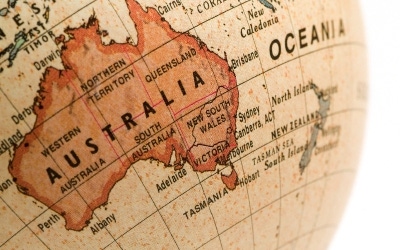Self-Storage in Australia and New Zealand: Growth and Occupancy Stagnant While Outlook Remains Hopeful
Self-storage activity has been quiet in Australia and New Zealand, with occupancies in some cities stagnant, others in slight decline, and some micro-markets experiencing an increase in rentals. Yet operators remain hopeful change is just around the corner.
November 14, 2011

By Dallas Dogger
Self-storage activity has been quiet in Australia, with occupancies in some cities stagnant, others in slight decline, and some micro-markets experiencing an increase in rentals. Local talk of the two-speed economy has some investors spooked, while theres another view that a number of markets were overbuilt in the 2005-2006 boom times.
While the mining industry is selling commodities for record prices, mainly to China, retail businesses report slow if stagnant growth, and new residential housing startsthe precursor of the drive for self-storageare at their lowest numbers in years. Local self-storage builders report little in the way of new construction, with some operators taking a consolidation approach to development, adding only new spaces needed in existing sites, and many reducing staff in the process.
A New Joint Venture
In September, Brisbane-based National Storage announced a new joint venture with global real estate investment management firm, Chicago-based Heitman. The joint venture acquired 20 freehold storage properties and businesses valued at more than AU$180 million. The transaction represents the single largest investment in the Australian storage industry.
The initial 20 acquisitions represent around 1 million square feet of storage space and 11,000 storage units. Nine properties were acquired from the APN Fund Management portfolio and another 11 were acquired from the Investec Property Opportunity Fund portfolio. The properties are located throughout Australia in Brisbane, the Gold Coast, Hobart, Melbourne, Perth, Sunshine Coast and Sydney. National Storage will handle the facility operations under its current branding and operational structure.
Indicating that he sees good potential for future acquisitions, Andrew Catsoulis, managing director of National Storage, says the company will target existing facilities in capital cities in which the company operates. As the market leader in these areas, we will be looking to add critical mass to our current operating platform as well as add value to these existing operations. We currently operate 60 centers around Australia and believe a target of 100 centers under National Storage ownership within the next two to three years is an achievable number.
The joint venture with Heitman brings a partner with vision, confidence and global expertise in the storage industry that will help contribute value to our growing joint portfolio, Catsoulis adds.
National Storage was established in December 2000 following the merger of Stowaway Self-Storage, National Mini Storage and Premier Self-Storage. Today the company owns and operates 60 facilities throughout Australia and employs more than 150 staff across its network. National has completed a revitalization of its technology systems, implementing a centralized customer contact center, VOIP phones across all facilities and a transition to Web-based software, allowing full-scale Web integration.
Oversupply in Some Markets
Kennards Storage, another of Australias largest operators, saw signs of improvement in occupancy and rental price growth in 2010, but it proved to be short-lived. 2011 has been a flat year for the storage industry, says owner Sam Kennard. But its better than other industry sectors, such as housing and retail. We should not be too unhappy about flat!
 Among the Kennards Australian portfolio, there remain pockets of strength that offset the weaker areas. In some areas, asking rental rates are even declining as result of the aggressive competition. However, markets such as the Gold Coast suffer oversupply, and it will take years to overcome this challenge.
Among the Kennards Australian portfolio, there remain pockets of strength that offset the weaker areas. In some areas, asking rental rates are even declining as result of the aggressive competition. However, markets such as the Gold Coast suffer oversupply, and it will take years to overcome this challenge.
For the past two years, Kennards has concentrated on expanding its existing self-storage facilities. The portfolio increased by approximately 2,000 new spaces and 90,000 square feet. Another 2,500 spaces are in the pipeline for the next 12 to 18 months.
In New Zealand, where Kennards has eight facilities, the industry has suffered a long period of recession or insipid economic growth since 2008. This has led to occupancies dropping dramatically in some locations. However, since May, Kennards facilities have seen broad-based growth in occupancy at all of its locations. This will feed into storage-price strengthening. Its nice to see this turning around now, Kennard says.
Online Marketing
For some operators, the gap between the big operators and the small mom-and-pop stores is widening. With the rise of the Internet, larger operators were quick to pick up on the demise of the Yellow Pages as a primary source of inquiry.
Since 2007, operators are receiving more customer inquires via the Internet, but some operators have yet to pick up on the trend. Now theyre finding out the hard way as calls have dropped off and theyve been left behind.
Lean Growth Ahead
In general, 2012 will likely be a year of continued lean growth as banks are still tight on lending, interest rates are still high, and investor confidence is still average despite the majority posting consistent incomes. The self-storage industry has weathered the global financial storm better than most, and theres an optimistic view that there will be pent-up demand when the economy improves. As real estate activity improves so does the fortune of self-storage operators.
Dallas Dogger is the CEO of Brisbane, Australia-based Centreforce IT, an installer of self-storage access-control, CCTV and door-alarm systems throughout Australasia. For more information, visit www.centreforceit.com.au .
You May Also Like





